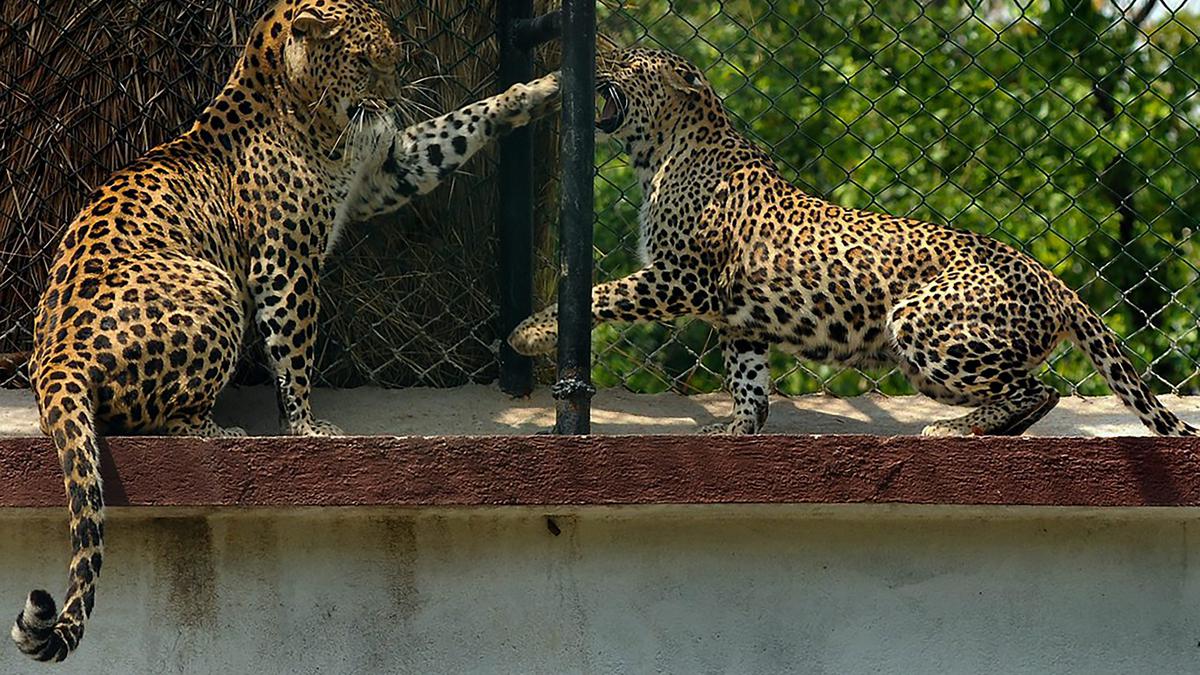Leopard Status 2022: Leopard Numbers Show 8% Rise from 2018 to 2022

In February 2024, the Wildlife Institute of India (WII) and the National Tiger Conservation Authority (NTCA), jointly released a report on the status of leopards in India. The population estimation report titled ‘Leopard Status 2022’. This report highlighted that the population growth in common areas from 2018 to 2022 across India was 1.08 % annually. This report is based on the fifth cycle of the leopard population estimation conducted in 2022. The report also shows the growth in the number of leopards from 1,690 in 2018 to 1,985 in 2022 in Maharashtra, from 1,783 to 1,879 in Karnataka, and from 868 to 1,070 in Tamil Nadu.
Leopard Status 2022: Highlights
|
Leopard Status 2022: Highlights |
|
|
Report Title |
Leopard Status 2022 |
|
Report Released by |
Wildlife Institute of India (WII) and the National Tiger Conservation Authority (NTCA) |
|
Growth percent from 2018 to 2022 |
1.08% annually |
|
Highest Number |
Madhya Pradesh (3907) |
|
Total Number of Leopard |
13,874 |
Leopard Status 2022: Key Points
-
Madhya Pradesh holds the largest leopard population in India followed by Maharashtra.
-
Significance: Tiger conservation measures are also helping the co-predator’s recovery
-
In Madhya Pradesh, the leopard occupancy increased in the Chambal and Bundelkhand regions with a marginal decline from the Chhindwara forests.
-
Panna Tiger Reserve and Kuno National Park exhibit some of the highest leopard densities in India.
-
As per the report, only three states - Maharashtra (1,985), Karnataka (1,879), and Tamil Nadu (1,070) - have a population of Leopard above 1000.
-
Due to poaching and human-animal conflict, Uttarakhand reported a 22% decline in the big cat numbers.
-
Assam, Arunachal Pradesh, and West Bengal have seen a collective 150% rise to 349 animals.
-
The Shivalik hills and the Gangetic plains recorded a 3.4% yearly decline.
-
Central India and the Eastern Ghats, the Western Ghats, and the hills of the northeast Brahmaputra flood plains recorded growth of 1.5%, 1%, and 1.3% per annum respectively.
-
The site-wise leopard population is higher in Nagarjunasagar Srisailam, Panna, Sariska, Satpura, Melghat, and Kanha Tiger Reserves.
International Leopard Day
-
International Leopard Day is observed every year on May 3.
-
Scientific Name of Leopard: Panthera pardus
-
Geographical Extent:
-
Members of the cat family
-
Leopards live in Asia, sub-Saharan Africa, Southern Russia, and the Indian subcontinent.
-
About Leopard:
-
The Indian leopard is classified as “Vulnerable” by the IUCN Red List.
-
It is listed in Schedule I of the Wildlife (Protection) Act of 1972.
-
The leopard population faces significant threats including habitat loss, fragmentation, human-wildlife conflict, poaching, and illegal trade.
Leopard Status 2022: Frequently Asked Questions (FAQs)
1. Which organizations have revealed the Leopard Status 2022?
Ans: The Wildlife Institute of India (WII) and the National Tiger Conservation Authority (NTCA) have revealed the Leopard Status 2022.
2. What is the status of Leopard in the IUCN Red List?
Ans: The Indian leopard is classified as “Vulnerable” by the IUCN Red List.
3. What is the scientific name of Leopard?
Ans: The scientific name of the Leopard is Panthera pardus.
4. As of February 2024, according to the Leopard Status 2022, what is the total number of Leopard in India?
Ans: As of February 2024, according to the Leopard Status 2022, the total number of Leopard in India is 13,874.
5. International Leopard Day is observed annually on __________.
Ans: The International Leopard Day is observed every year on May 3.
6. According to the Leopard Status 2022, which Indian state holds the largest leopard population in India?
Ans: Madhya Pradesh holds the largest leopard population in India followed by Maharashtra.
7. Where is the headquarters of the Wildlife Institute of India (WII)?
Ans: The headquarters of the Wildlife Institute of India (WII) is Dehradun.




